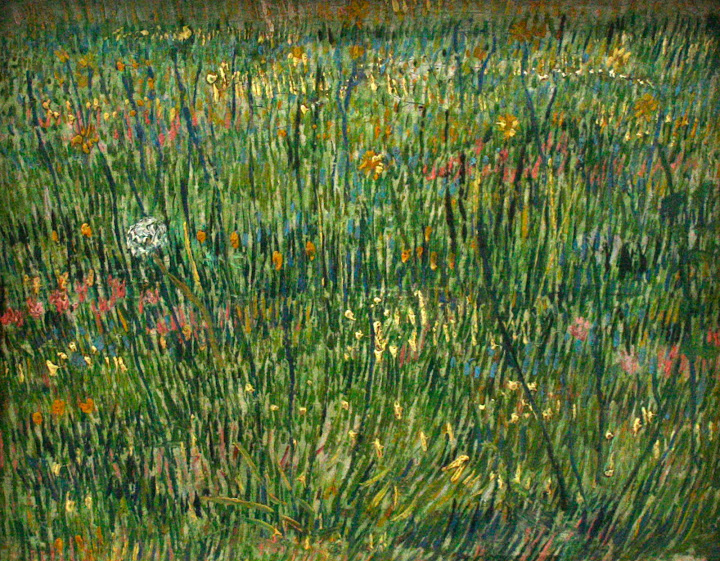Scientists recreate hidden Van Gogh portrait
A team of European scientists unveiled on Wednesday a new method for extracting images hidden under old masters’ paintings,  recreating a color portrait of a woman’s face unseen since Vincent van Gogh painted over it in 1887.
recreating a color portrait of a woman’s face unseen since Vincent van Gogh painted over it in 1887.
For years, art historians have been using x-rays to probe artworks hidden underneath other paintings, a technique resulting in a fuzzy, black-and-white image. But Joris Dik, a materials scientist from Delft University, and Koen Janssens, a chemist from the University of Antwerp in Belgium, combined science and art to engineer a new method of visualizing hidden paintings, using high-intensity x-rays and an intimate knowledge of old pigments.
The pair used the new approach on “Patch of Grass,” a small oil study of a field that Van Gogh painted in Paris while living with his brother Theo, who supported him.
While not exact in every detail, the image produced is a woman’s head that may be the same model Van Gogh painted in a series of portraits leading up to the 1885 masterpiece “The Potato Eaters.”
 Though his paintings are now worth millions, Van Gogh was virtually unknown during his lifetime and struggled financially before committing suicide in 1890. He often reused canvas to save money, either painting on the back or over the top of existing paintings, and experts believe roughly a third of his works hide a second painting underneath.
Though his paintings are now worth millions, Van Gogh was virtually unknown during his lifetime and struggled financially before committing suicide in 1890. He often reused canvas to save money, either painting on the back or over the top of existing paintings, and experts believe roughly a third of his works hide a second painting underneath.
The painting under “Patch of Grass” adds weight to the theory that Van Gogh mailed paintings from the Netherlands to his brother Theo, and, after moving to Paris to join him, found the old works and painted over them.
Both Dik and Meedendorp were excited about the prospect of using the technique to probe paintings by Van Gogh and other famous artists such as Rembrandt and Picasso.
